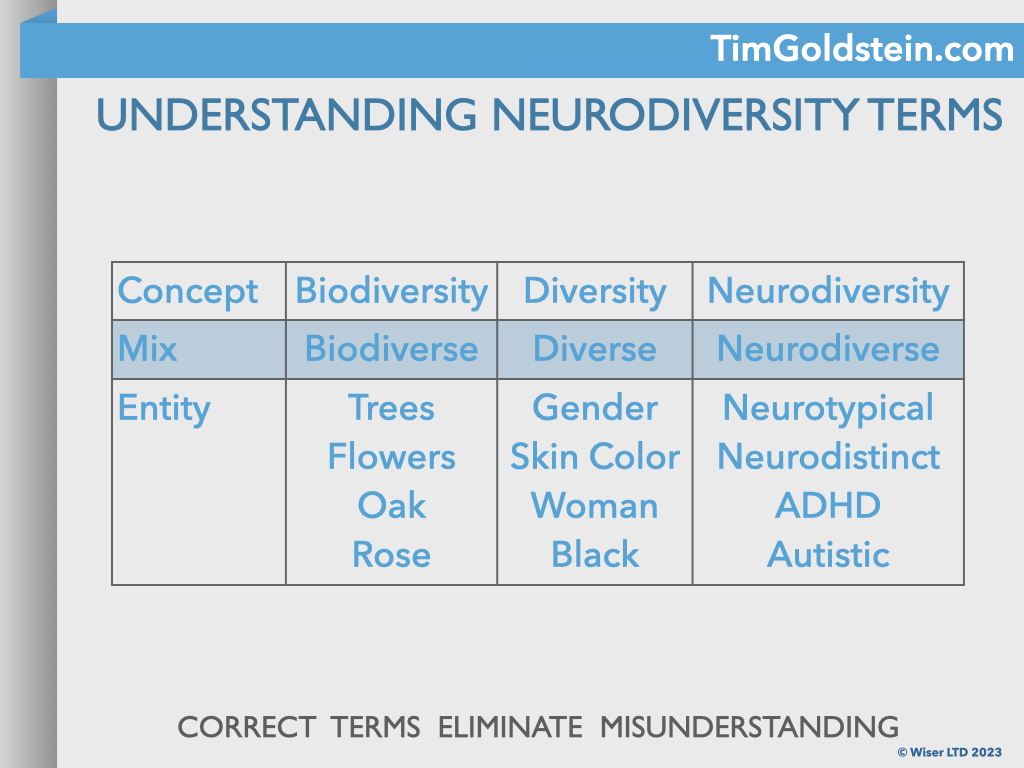Using Terms Correctly, "Neurodiverse" is Not a Specific Group or Person

Neurodiversity refers to the natural variation in human brain function and cognition. It encompasses a wide range of conditions, including autism spectrum disorder, attention deficit hyperactivity disorder (ADHD), dyslexia, dyspraxia, and ways of perceiving, processing, and thinking that lack medical names. Most people who are familiar with neurodiversity use the term correctly with the meaning including all humans and the entire range of ways to perceive, process and think that exist in the human population.
The word "Neurodiverse" is often misunderstood and all too frequently misused as referring to a specific group or person. An example I heard recently on a major autism summit was continually referring to autistic students as "neurodiverse learners". However, this is not the case and is actually a contortion of the English language. My good friend Dr Lutza Ireland of Australia explains this in a very easy way using the example of biodiversity. In biodiversity you don't refer to a particular type of tree, whether a single example or a stand of them, as biodiverse.
In biodiversity "biodiverse" refers to the makeup of a region or ecosystem. Examples of using the term are "A rain forest is quite biodiverse" or "The world is rapidly becoming far less biodiverse". When we use biodiverse it is always a reference to how broad or narrow the variation of species is. If we want to reference particular populations we might reference "mammals" if we were talking about all of them or use the name of a specific species if we are referring to a particular unique groups. If we want to reference an individual within the groups we need to use names if they have them like our pets or identifiable descriptions if names don't apply.
The same word usage applies in neurodiversity. "Neurodiverse" refers to the makeup of a group or organization. An example is the statement "Company XYZ is not very neurodiverse". It is not an identifier of the group, but an adjective that helps us understand how extensively the concept, neurodiversity, is present in the grouping we are referencing. If we want to designate an identifiable group or a single individual just as in biodiversity we need to use the name of the group or individual or an identifiable description. In neurodiversity the top level groups are easy as there are only 2 of them. There is "Neurotypical" or what I call "Neurodistinct" although some prefer the older term that means the same "Neurodivergent". I have never seen the neurotypical broken into more fine grained groupings but the neurodistinct are composed of many individuals who have medically named conditions or simply those who display distinctly different from typical perception, processing, and thinking.
To help explain the word usage and make it a little easier to remember the proper term I created a little matrix to use as a tool.

DON'T MISS TIM'S PODCAST
podcast.TimGoldstein.com
Stay connected with news and updates!
Join us to receive the latest news and updates from Tim.
Don't worry, you will not be spammed and your information will not be shared.